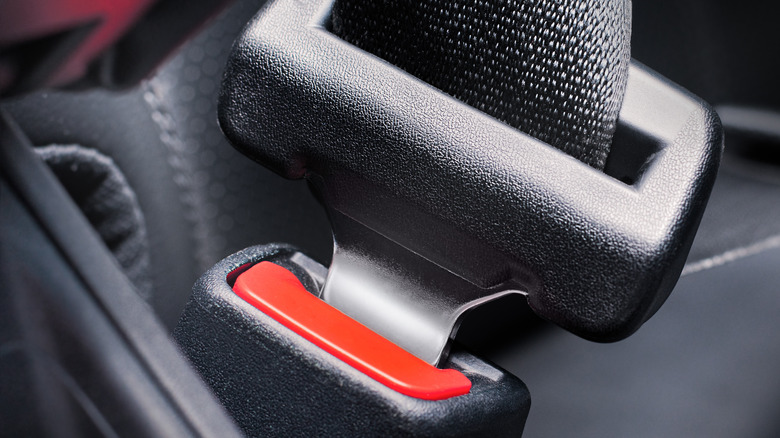How Seat Belts Use Tiny Explosives To Save Lives During A Collision
Not everyone takes safety regulations seriously. Who among us hasn't at some point they were too cool to wear a bicycle helmet? What about those annoying slogans like "clunk, click, every trip" to try to drill a universal truth into us: It's cool to keep yourself safe. Helmets and seat belts save lives.
The National Highway Traffic Safety Administration reports that, in the year 2016 alone, around 15,000 people who were involved in vehicle accidents survived simply because they were wearing their seatbelts. It's difficult to understate just how important this simple act can be, and it's also challenging to explain how these seemingly simple devices actually work. Did you know that tiny explosions have an integral role in activating a seat belt?
Here's a closer look at this intriguing, often underrated, yet crucial aspect of our cars. Seat belts aren't cool? Science says otherwise.
An explosive impact
The seat belt's cousin, the air bag (which was unfortunately the subject of a worrying report about potential safety issues for certain vehicles in May 2023), explodes into action in a literal sense. Devastating road accidents can take place in microseconds, so how do you make precautionary measures fast enough to be effective?
In 1964, engineer Yasuzaburou Kobori devised a sodium azide-burning solution, which was combined with silicon dioxide and potassium nitrate, according to Chemical & Engineering News. The explosive reaction produced enough gas to inflate an airbag in a blink of an eye, or literally quicker.
Seatbelts, too, need to be able to react at lightning speed in order to save lives, and therefore employ tiny explosives in a similar fashion. With the goal of preventing drivers or passengers from being thrown through the windshield of a vehicle, seat belts are designed to clasp on, thereby limiting or preventing trauma to the body. A pretensioner, through the use of an igniter and electrodes, reacts instantaneously to an accident, as explained by Real Engineering on YouTube. The resulting reaction launches the small "teeth" of the device forward into a pinion, which causes the belt to retract.
The chemical blend used in airbags may have changed since Kobori's original creation, the precise mechanics of seat belts also may differ from vehicle to vehicle, but these seemingly humdrum vehicle features have some surprisingly intricate technological features beneath the surface. Long may they combust to save lives.

